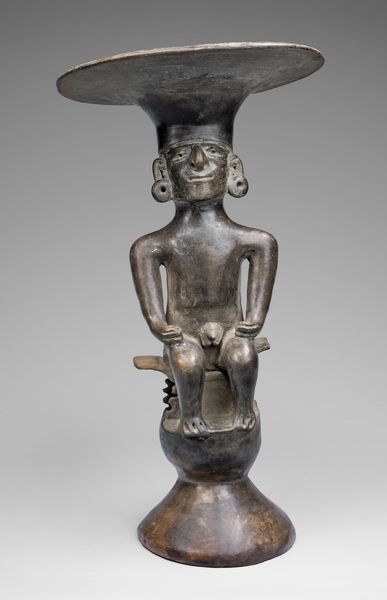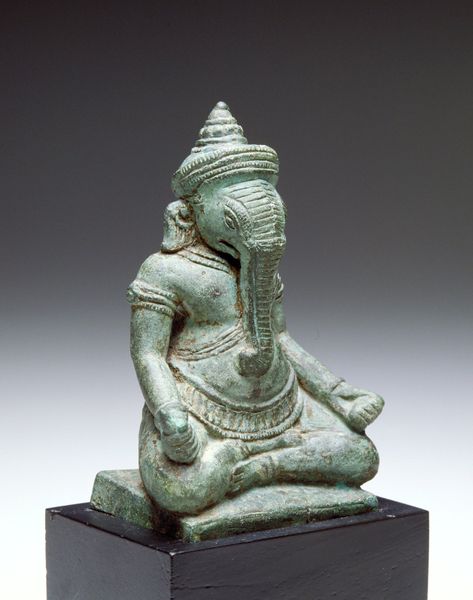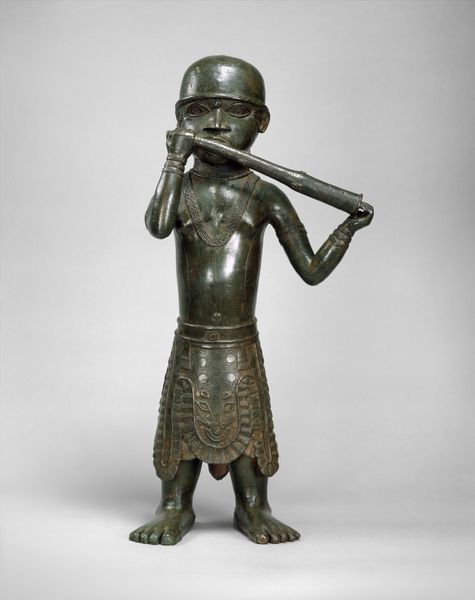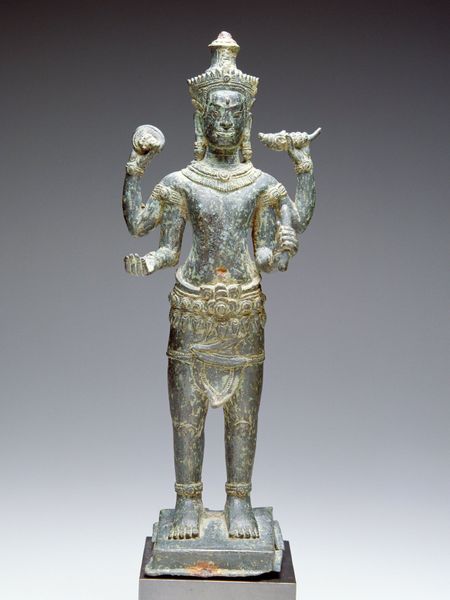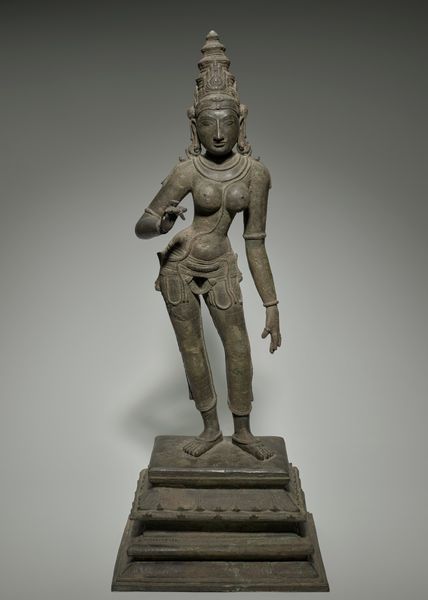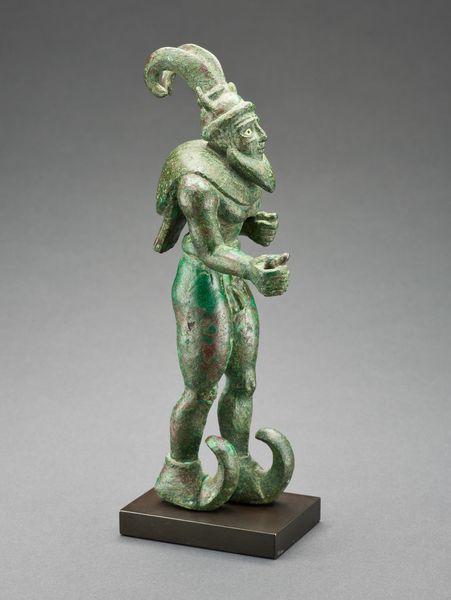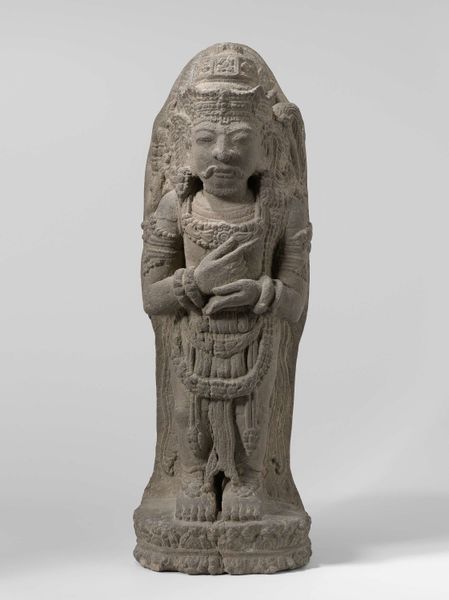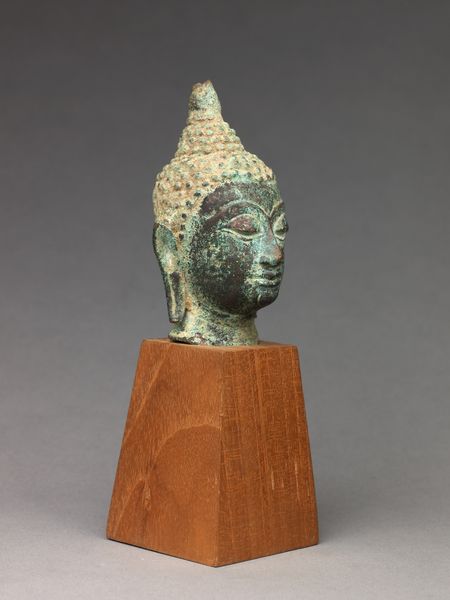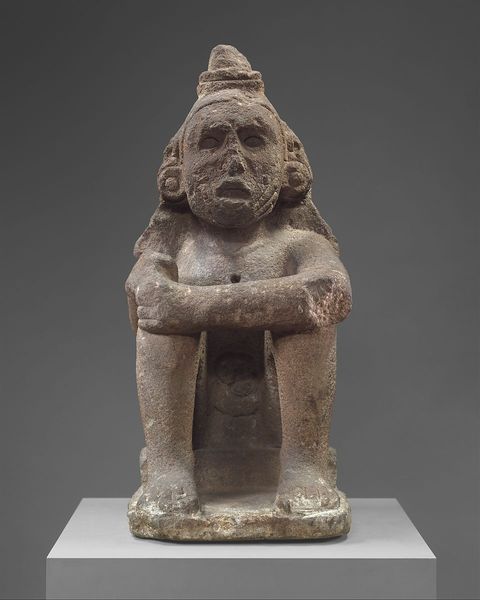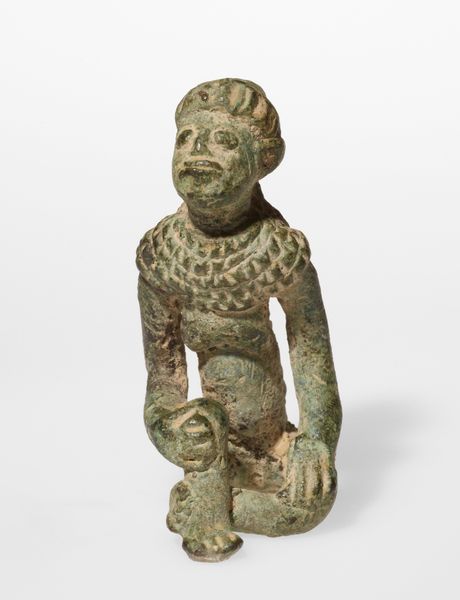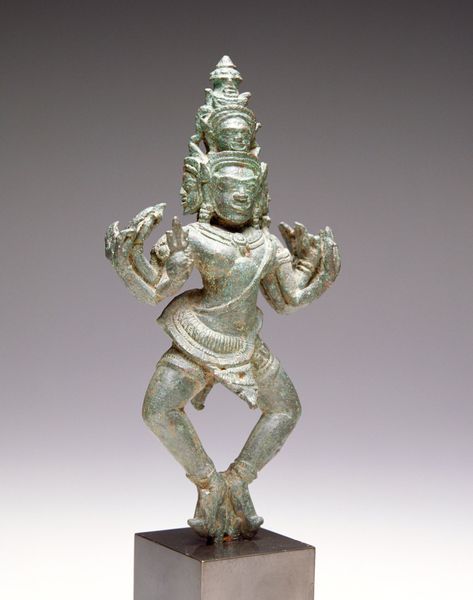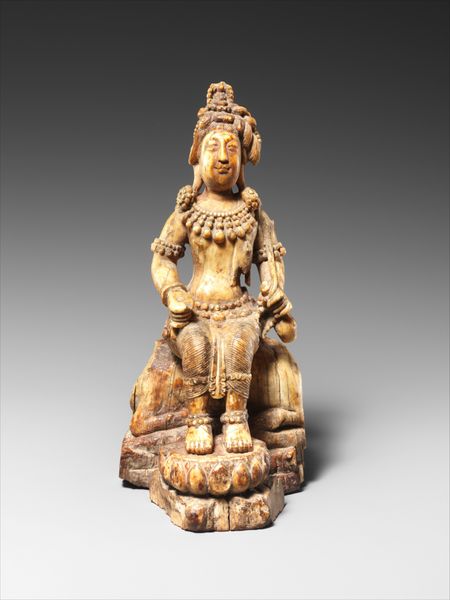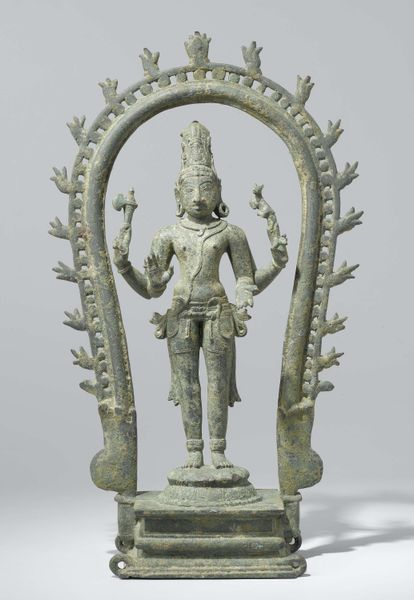
bronze, sculpture
#
portrait
#
medieval
#
asian-art
#
bronze
#
figuration
#
sculpture
Dimensions: 8 3/16 x 2 7/16 x 2 3/8 in. (20.8 x 6.19 x 6.03 cm)
Copyright: Public Domain
This bronze sculpture, now residing at the Minneapolis Institute of Art, depicts Bhikshatana, a form of the Hindu god Shiva. Note the begging bowl and the mendicant's staff, symbols of Shiva's ascetic persona. The gesture of the raised hand is significant, echoing through centuries as a sign of teaching and reassurance found in various cultures. One sees echoes of it in the raised hands of classical orators, and even in the blessings of Christian iconography. The begging bowl and staff are motifs that evoke a primal sense of humility and detachment. Shiva's transformation into Bhikshatana, the wandering beggar, reflects a deep psychological need for renunciation. This symbol has recurred throughout history. It serves to remind us of the cyclical nature of destruction and creation. It speaks to our collective consciousness of mortality and renewal.
Comments
minneapolisinstituteofart almost 2 years ago
⋮
In one of his many forms, the Hindu god Shiva wanders through the forest disguised as an ascetic, wearing only a loincloth and holding a walking stick and rosary. This small icon probably was destined for a family altar, and demonstrates that both Hindu and Buddhist deities were worshipped in Cambodia, though Shiva's crown indicates the artist's incorporation of Khmer Buddhist iconography.
Join the conversation
Join millions of artists and users on Artera today and experience the ultimate creative platform.
